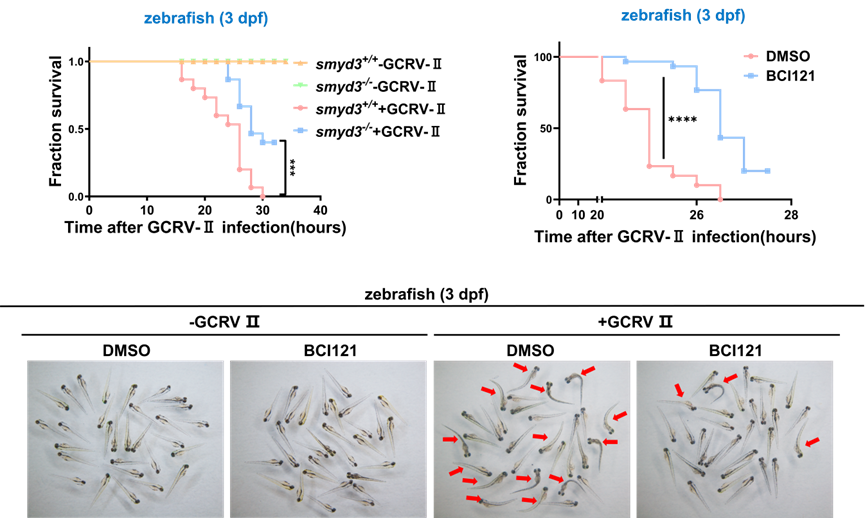
Newsroom
SMYD3 Regulates Antiviral Immunity Through Lysine Methylation of IRF3
As a key transcription factor in the type I interferon signaling, interferon regulatory factor 3 (IRF3) activation must be tightly controlled to efficiently activate innate immunity while avoiding its overactivation. However, the precise regulation of IRF3 and the underlying mechanisms remain unclear.
A research group led by Prof. XIAO Wuhan from the Institute of Hydrobiology (IHB) of the Chinese Academy of Sciences has identified SET and MYND domain containing protein 3 (SMYD3) as a negative regulator of the type I interferon signaling pathway. SMYD3 directly catalyzes the dimethylation of IRF3 at lysine 39. The study has been published in the Proceedings of the National Academy of Sciences(PNAS).
In this study, researchers discovered that SMYD3 negatively regulates innate antiviral responses induced by both RNA and DNA viruses. The suppressive role of SMYD3 in antiviral innate immunity depends on its enzymatic activity. Knockout of SMYD3 or inhibition of its enzymatic activity enhances antiviral gene expression and inhibits viral replication.
Mechanistically, the researchers revealed that SMYD3 interacts with IRF3 to catalyze the dimethylation of IRF3 at lysine 39. This dimethylation inhibits IRF3’s phosphorylation, dimerization, and subsequent nuclear translocation, ultimately suppressing IRF3 activation and downstream type I interferon signaling. Dimethylation of IRF3 at lysine 39 was increased upon viral infection, and methylation of IRF3 at lysine 39 results in the loss of its activity.
To validate their findings, the researchers used mouse and zebrafish as in vivo models. They confirmed that Smyd3 deficiency in both mice and zebrafish renders them more resistant to viral infection compared to their wild-type siblings.
This study not only uncovers the role of the lysine methyltransferase SMYD3 in regulating antiviral innate immunity but also provides new insight into the novel modulation of IRF3 that affects its activation.
Online: January 15, 2025

Knocking out smyd3 or inhibiting its enzymatic activity results in increased resistance to GCRV-II infection (Image by IHB)

smyd3-deficient zebrafish are more resistant to SVCV infection (Image by IHB)
(Editor: MA Yun)